Buying a Home? Pre-Qualification vs. Pre-Approval
When you start the home buying process, you may hear the terms “pre-qualify” and “pre-approval” used interchangeably. The fact is, they are different. Both of these steps are important to anyone who is considering purchasing a house. Let’s talk a little more about what each of these terms means.
Pre-Qualification
Pre-qualifying can help you determine how much house you can afford. This is a useful tool to help give you a guideline before you delve into house hunting. Pre-qualification generally doesn’t require you to dig through mountains of paperwork and provide documentation. You can think of pre-qualifying as a quick way to figure out what type of mortgage will best suit your needs, how much you may need for a down payment, what your monthly mortgage payment might be, and a ballpark figure of how much you can finance depending on your debt to income ratio. The great thing about a pre-qualification is that it gives you plenty of time to address any issues that appear on your credit report, pay down debts, and secure additional money for a larger down payment. A pre-qualification is an important step to take well ahead of when you actually want to move. Think about checking with your lender about six months to one year in advance so you have time to boost your score or address any concerns that may crop up along the way.
Pre-Approval
With a pre-approval, you really get down to the details of buying a home. This step is traditionally where your lender will make a hard inquiry on your credit report to obtain your score. They may ask you for explanations about debts and proof of paid accounts. In addition, you will be asked to provide thorough documentation of your income. You will need to provide at least two years' worth of tax returns, w2’s, pay stubs, bank statements, and possibly even utility bills. At the end of the review, your lender should be able to tell you the exact loan amount that you will qualify for and the terms you need to follow to move forward with your purchase. You will also want to tell them about how much you expect to have available for a down payment. Remember to set aside 20% if possible when you do a Conventional Mortgage (unless you are taking advantage of a special program. Failing to do so means you will have to include PMI (Private Mortgage Insurance) on your loan. There are other programs available which don’t require a down payment, so ask your loan officer what you qualify for to avoid paying PMI. I can tell you from personal experience that having to pay hundreds of dollars extra each month stinks!
I will leave you with one other piece of advice…once you are pre-approved DO NOT APPLY FOR ANY ADDITIONAL CREDIT FROM ANYWHERE. That means don’t go out and buy new furniture for that new house just yet! New credit inquiries affect your score, and new debts may push your debt-to-income ratio above the lending threshold – which means no house. Whatever you do, if you are planning on opening a new account, wait until well after your mortgage loan has been closed, especially a new credit card.
Do you have anything to add? I want to hear from you! Leave a comment below or email me.
Krista Kyte is a personal finance blogger and personal banker with over 18 years of experience in the financial industry. Krista is passionate about helping our members understand their financial situations. She writes tips that will help consumers reach and maintain financial security, and start living the life they’ve always wanted.





